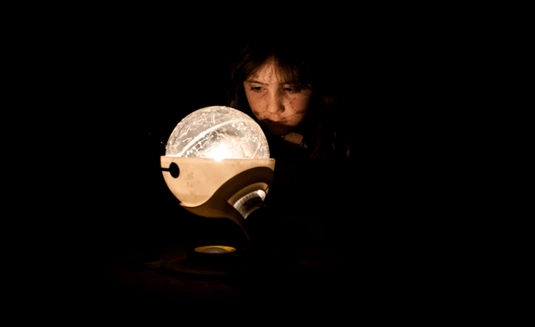
Here we are in the 21st century. We know that the universe is an enormous place. We're just bursting with scientific knowledge. But how are we doing with the even-bigger ideas? Our human societies seem to be erasing them, or ignoring them - maybe we think we're too busy for them.
Here on the New Christian Bible Study site, we'll buck the trend. We want to explore the big ideas that give us a framework for living better lives. Here's a start on a list of big ideas from a New Christian perspective. For each idea, there is a footnote that lists some references in Swedenborg's theological works:
1. God exists. Just one God, who created and sustains the entire universe in all its dimensions, spiritual and physical. 1
2. God's essence is love itself. It's the force that drives everything. 2
3. God's essence comes into being, that is, it exists, in and through creation. 3
4. There are levels, or degrees, of creation - ranging from spiritual ones that we can't detect with our physical senses or sensors, to the level of the physical universe where most of our awareness is when we're alive here. 4
5. The created universe emanates from God, and it's sustained by God, but in an important way it is separate from God. He wants it to be separate, so that freedom can exist. 5
6. God operates from love through wisdom - willing good things, and understanding how to bring them about. 6
7. The physical level of creation exists to provide human beings with an opportunity to choose in freedom, with rationality, whether or not to acknowledge and cooperate with God. 7
8. God provides all people everywhere, regardless of their religion, the freedom to choose to live a life of love to God and to the neighbor. 8
9. God loves everyone. He knows that true happiness only comes when we're unselfish; when we're truly motivated by a love of the Lord which is grounded out in a love of the neighbor. He seeks to lead everyone, but will not force us to follow against our will. 9
10. God doesn't judge us. He tells us what's good, and what's evil, and flows into our minds to lead us towards good. However, we're free to reject his leading, and instead opt to love ourselves most. Day by day, we create habits of generosity or of selfishness, and live out a life in accordance with those habits. Those habits become the real "us", our ruling love. 10
11. Our physical bodies die eventually, but the spiritual part of our minds keeps going. It's been operating on a spiritual plane already, but our awareness shifts - so that we become fully aware of spiritual reality. 11
脚注:
1. Divine Love and Wisdom 4, 15, 16, 23, 301, Divine Providence 46, True Christian Religion 11, 19.
2. Divine Love and Wisdom 4, 29, 30, Apocalypse Explained 297, Heaven and Hell 13, 545.
3. Divine Love and Wisdom 31, 32, 57, 59, 84, 169-171, 329, 330, Divine Providence 3, 27.
4. Divine Love and Wisdom 65, 179, 180, 213, 230, 363.
5. Divine Love and Wisdom 44, 45, 55.
6. Divine Love and Wisdom 42, 43, 52, 154, Divine Providence 3, 5.
7. Divine Providence 27, 71, 72, 75, 129, True Christian Religion 459, 490.
8. Divine Providence 145, 322, 324, 325, 328, Apocalypse Explained 986, Heaven and Hell 522, True Christian Religion 457.
9. Divine Providence 67, 322, 333, 334, Heaven and Hell 312, 319, 324.
10. Apocalypse Explained 986, Heaven and Hell 479, 481, 525, 598. The True Christian Religion 795.
11. Arcana Coelestia 168, 1854, 3016, 5078, 6008, 8939, Heaven and Hell 445, 461, 493, 498, Divine Love and Wisdom 90, Last Judgment 25.






